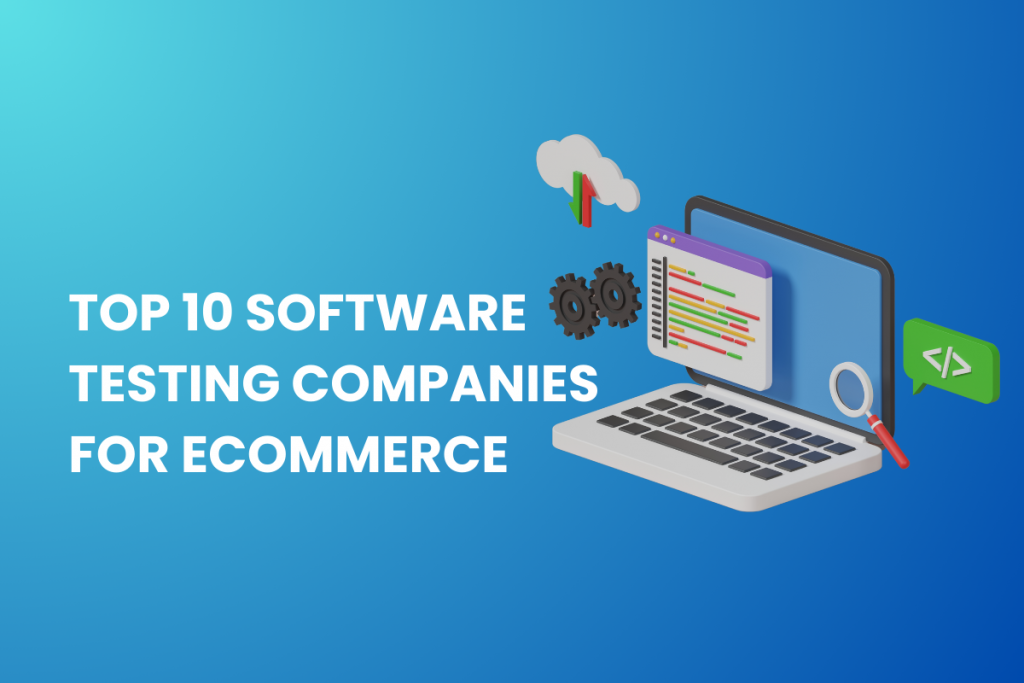The lines between searching, chatting, and buying are about to blur beyond recognition. In a move that signals a seismic shift for online retail, OpenAI has deepened its partnership with payments giant Stripe, moving beyond simple subscriptions to co-develop a new, open-source “Agentic Commerce Protocol.”
This collaboration aims to power a new “Instant Checkout” feature within ChatGPT, enabling users to browse, select, and purchase products directly within ChatGPT — bypassing traditional retail websites.
This isn’t just a new payment feature; it’s the foundation for a new era of “conversational commerce.” When we first read the news, many questions arise: “Will this be a game-changer or a threat to retailers?”, “Who will benefit the most?”, and “How will retailers adapt to this evolution?”
Let’s break down what this means and the profound impact, threats, and opportunities it presents for the future of retail.
What is the Agentic Commerce Protocol? Beyond a Simple Checkout
The Agentic Commerce Protocol (ACP) is an open-source standard co-developed by OpenAI and Stripe that enables seamless programmatic commerce flows between buyers, AI agents, and businesses. Rather than requiring AI systems to emulate human interactions on web pages, ACP provides a universal language for initiating, updating, and completing checkouts while preserving merchant control, security, and customer relationships. Think of it as a universal shopping cart for AI.
Core Principles
1. Open Standard and Extensibility
ACP is released under the Apache 2.0 license, allowing any business or AI platform to implement the protocol for purchases initiated by compatible AI agents.
2. Separation of Responsibilities
- AI Agent: Presents product options, collects buyer intent and payment credentials, and initiates protocol requests.
- Merchant: Maintains the data model, order logic, and payment processing, acting as the merchant of record.
- Payment Provider: Processes charges via secure tokens, without exposing raw payment details.
3. Security and Trust
All communications occur over HTTPS with bearer-token authorization. Webhooks and payment events are signed using HMAC to ensure data integrity and authenticity.
Here’s how it works in practice:
1. Discovery and Selection (Buyer): A user discovers a product through a conversation with an AI agent. They select what they want to buy, choose a saved payment method or add a new one, and grant permission for the AI agent to initiate checkout on their behalf.
2. Interface and Coordination (AI Agent): The AI agent surfaces products, displays checkout options, and collects payment details. When the buyer confirms their purchase, the agent makes a checkout request to the merchant on behalf of the buyer.
3. Authorization and Processing (Business): The merchant receives the checkout request along with secure payment credential details from the AI agent. Using standard payment and fraud signals, the business decides whether to accept or decline the transaction. The merchant maintains its position as the merchant of record throughout.
4. Secure Payment Handling (Payment Provider): The AI agent communicates with the merchant’s payment provider to relay payment credentials via a secure token. This token is programmatically controlled, permissioned, and logged, ensuring that sensitive payment information never passes directly through the AI agent.
This architecture ensures that AI agents can facilitate commerce without ever storing or having direct access to sensitive payment credentials, addressing one of the primary security concerns in AI-driven transactions.
What’s Supported & Limitations (as of now)
Supported / active:
- In the U.S., users can make single-item purchases from U.S.-based Etsy sellers via ChatGPT.
- Payment methods include credit/debit cards, Apple Pay, Google Pay, and Stripe Link (which lets users pay faster using stored payment info).
- The instant checkout is free for users (i.e., no extra fees added on the user side) — merchants are charged a commission on completed transactions.
- The technology is in early rollout, with support for more merchants (e.g., Shopify) coming soon.
Limitations/things not fully done yet:
- Multi-item carts are not yet supported in Instant Checkout (only one item per transaction currently).
- Geographic rollout is limited; starting with U.S. markets, not all merchants globally are yet supported.
- Some merchants who do not adopt Instant Checkout may only appear as links or via traditional redirections.
- The commission rate (i.e., how much OpenAI takes per transaction) is not fully disclosed publicly (or is under NDA with merchants).
- Potential complexity for merchants who do not use Stripe — they have to implement compatibility (Shared Token API or Delegated Payments), which could be nontrivial.
The Rise of AI-Driven Commerce
Traditionally, online shopping has relied on platforms like Amazon or Google Search to drive discovery. Consumers begin by searching, browsing, and eventually purchasing through retail websites. However, ChatGPT’s new integration with Stripe condenses this funnel into a single, conversational experience. This streamlined flow represents a significant challenge to the traditional traffic-and-conversion model of retail eCommerce.
Disrupting Established Players
The move directly challenges the dominance of Google and Amazon in product discovery and online shopping. Rather than searching Google for products or browsing Amazon’s marketplace, consumers can now discover and purchase items within the same conversational interface they use for information, entertainment, and productivity.
When OpenAI announced Instant Checkout for Etsy, the marketplace’s stock jumped 16% in a single day, reflecting investor confidence in the potential of AI-driven commerce. This market reaction signals that financial analysts view conversational commerce as a genuine paradigm shift rather than a marginal innovation.
Changing the Discovery-to-Purchase Journey
Traditional eCommerce relies on intentional searches, category browsing, and comparison shopping across multiple sites. Conversational commerce introduces a more fluid, contextual purchasing model where products emerge naturally from discussions about needs, problems, or preferences.
A user discussing home organization might receive product recommendations woven into helpful advice, creating a shopping experience that feels less transactional and more consultative. This shift from search-based to conversation-based discovery could fundamentally alter how consumers find and evaluate products.
Democratizing Access to Premium Channels
For small and medium-sized businesses, particularly artisans and niche merchants on platforms like Etsy, ACP provides access to a massive new distribution channel without requiring significant technical investment or marketing budgets. A handmade jewelry maker can now reach ChatGPT’s hundreds of millions of users with the same ease as major brands.
The Opportunity: A Frictionless Future for Retail
For forward-thinking retailers and eCommerce brands, this represents a monumental opportunity.
The Death of Friction
The biggest hurdle in eCommerce is cart abandonment. By reducing the purchasing journey from multiple clicks and page loads to a single command, “Instant Checkout” has the potential to increase conversion rates dramatically.
Hyper-Personalized Discovery
Your brand can be discovered at the exact moment of intent. A user isn’t just searching for a “red dress”; they’re asking their AI assistant for “a red dress for a summer wedding in Florida that’s both elegant and breathable.” This contextual, highly specific discovery is far more powerful than traditional keyword-based SEO.
The Rise of AI-Native Brands
The most successful future brands will be those that are optimized for AI discovery. This means having clean, detailed, and semantically rich product data that AI agents can easily understand and recommend.
New Sales Channel
ChatGPT, with its massive user base, effectively becomes a new, high-intent sales channel, akin to a next-generation Amazon or Shopify storefront, but accessible through conversation.
The Threat: Disintermediation and the Battle for the Customer
However, this new paradigm is not without significant risks for established players.
Disintermediation Risk
Established marketplaces and shopping platforms face the threat of being bypassed entirely. If consumers can discover and purchase products directly through AI conversations, they may have less reason to visit traditional eCommerce sites. Amazon, eBay, and other marketplaces built on controlling the product discovery and checkout experience could see reduced traffic and transaction volumes.
Loss of Direct Customer Relationships
Merchants must carefully evaluate how much customer relationship data they’re willing to share with AI intermediaries. While ACP is designed to keep merchants as the merchant of record, the reality is that the AI agent controls the initial discovery interaction and shapes the shopping context. Over time, this could shift power dynamics in ways that aren’t immediately apparent.
Brand Presentation Challenges
In traditional eCommerce, merchants control every aspect of how their products are presented, including photography, copy, layout, and brand storytelling. In conversational commerce, the AI agent determines how products are described and presented to users. Even with merchant controls built into ACP, brands may lose some narrative control, potentially leading to the commoditization of differentiated products.
Fraud and Security Concerns
New transaction channels inevitably attract new vectors of fraud. Businesses must develop the capability to distinguish legitimate AI agent transactions from sophisticated bot attacks disguised as AI-driven commerce. The fraud detection and risk management landscape becomes more complex when transactions don’t follow traditional browser-based patterns.
The Broader eCommerce Ecosystem
ACP’s impact extends beyond individual merchants to reshape the entire eCommerce infrastructure.
Platform Competition
The protocol’s open-source nature means it won’t remain exclusive to ChatGPT. Other AI assistants, from Google’s Gemini to Anthropic’s Claude to emerging startups, can implement ACP, creating a new competitive landscape for AI-powered shopping platforms. Merchants will need strategies for managing presence across multiple AI agents.
Payment Provider Dynamics
Stripe’s early positioning with ACP gives it a significant advantage, but the protocol’s openness means other payment providers can offer compatible services. This could intensify competition in the payment processing space, potentially driving down transaction fees or spurring innovation in fraud detection and cross-border commerce.
Logistics and Fulfillment Evolution
As conversational commerce grows, fulfillment centers and logistics providers must adapt to potentially different order patterns. AI agents might optimize for factors like combined shipping from multiple merchants, environmental impact, or delivery timing in ways that traditional eCommerce doesn’t prioritize.
Regulatory Considerations
Conversational commerce raises new regulatory questions. How should AI agents disclose sponsored product recommendations? What consumer protections apply when purchases happen through conversation rather than traditional checkout flows? How should data privacy laws apply to shopping conversations? Regulators worldwide will need to address these questions as the technology continues to scale.
The Future of Retail in an AI-First World
The OpenAI-Stripe protocol is a clear signal that the future of commerce is agentic. We will no longer just “go shopping” online; we will delegate shopping to our AI agents.
To prepare, retailers must:
1. Embrace an API-First Strategy: Ensure your product catalog, inventory, and pricing are available via clean, well-documented APIs that AI agents can query.
2. Invest in Rich Product Data: Move beyond basic product titles and images. Incorporate detailed attributes, high-quality alt-text, usage scenarios, and compatibility data to make your products easily understandable and recommendable by AI.
3. Rethink Customer Loyalty: Develop loyalty strategies that transcend a single platform. How do you create a relationship with a customer whom you may never directly interact with on your own website?
4. Experiment Early: Engage with platforms like Shopify that are already integrating with these new protocols. Test how your products appear and are recommended within AI interfaces like ChatGPT.
Conclusion: Checkout is Now a Conversation
The Agentic Commerce Protocol represents a pivotal moment in eCommerce evolution. Similar to the shift from desktop to mobile commerce, businesses that recognize and adapt to this change early will gain significant advantages over those that wait.
For retailers, the message is clear: conversational commerce isn’t a distant possibility; it’s here now, with 700 million weekly ChatGPT users already able to make purchases through conversation. The protocol’s open-source nature ensures it will spread beyond ChatGPT to other AI platforms, making this shift industry-wide rather than platform-specific.
The businesses that will thrive in this new landscape are those that view ACP not as a threat to existing channels but as an opportunity to meet customers where they increasingly spend their time: in conversation with AI assistants. By maintaining control over customer relationships while embracing new distribution channels, forward-thinking retailers can position themselves at the forefront of the next evolution in commerce.
The storefront of the future isn’t a website, it’s a conversation. The question for every business is no longer just “Is my website optimized?” but “Is my brand ready to be recommended by an AI?” The ones who can answer “yes” will be at the forefront of the agentic commerce revolution.
ContactContact
Stay in touch with Us




